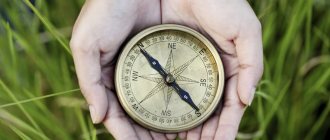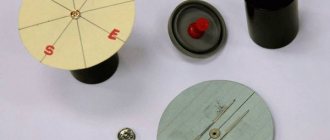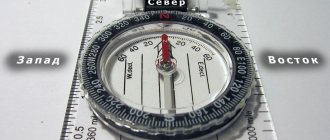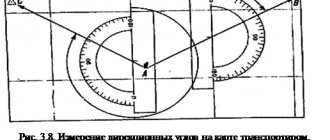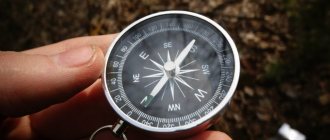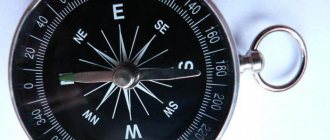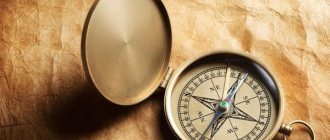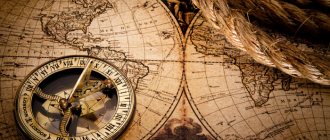Updated: 10/11/2018 18:16:54
Expert: Savva Goldshmidt
*Review of the best according to the editors of expertology.ru. About the selection criteria. This material is subjective in nature, does not constitute advertising and does not serve as a purchase guide. Before purchasing, consultation with a specialist is required.
Nowadays, when navigation using GPS is used everywhere, few tourists remember the map and compass. This only shows inexperience. Every seasoned traveler knows that GPS is unable to completely replace a compass, since it requires a constant satellite signal, which is not available everywhere, and a battery charge, but there is no way to recharge it along the way. Even if you are a beginner, we recommend taking an additional compass with you so that you can navigate the terrain in any situation.
A compass is known to help determine location, navigate on a map, and find necessary objects. It allows you not to get lost, and if this happens, it will quickly lead you to the route if the traveler has the necessary knowledge of how to operate the device. But it is important not only to have the skill to use a compass, but also to be able to select the right device for each specific task. There are compasses for athletes, military personnel, geologists, sailors, pilots, etc.
Expertology experts studied user reviews and expert opinions and compiled a rating that included the 9 best compasses.
How to choose a compass
- Varieties.
First you need to decide what types of devices there are. There are three main groups: liquid - simple devices characterized by compact dimensions, reasonable cost and accuracy. Such devices do not require configuration or calibration. Due to the fact that the reservoir is usually glass, the compass should be handled with care, protecting it from shaking and falling; magnetic - devices known to almost everyone, which are considered good old classics and have a wide range of uses. They are distinguished by high accuracy, ease of use, and small dimensions. However, it should be remembered that in the presence of strong magnetic fields nearby they may give inaccurate readings; electronic – a modern modification of a magnetic compass with only expanded functionality. They are distinguished by accuracy, ease of use, and compactness. True, electronic compasses are quite expensive. It happens that such devices are combined with GPS navigators. - For what purposes is it purchased?
Basic models are suitable for novice adventurers, as well as people who, due to little training, stick to the route without deviating much, and move mainly during the day. These compasses have the essential components without the hassle-free parts like tilt adjustments and mirrors. Multifunctional devices with a full range of capabilities (equipped with a magnifying glass, mirror, etc.) allow you to improve navigation accuracy. They are characterized by high cost and complexity of setup, so they are suitable for experienced travelers, military personnel, geologists and others. Accessory compasses are key fobs, watches, etc. Not all such devices are capable of working with high accuracy, so you need to be especially careful when choosing. - Case dimensions.
It is important that the model is compact. The compass should be small so that it is always at hand and does not cause inconvenience to the tourist during transportation and operation. Prefer devices with waterproof and shockproof housing. - Global arrow.
Needed on the compass if the traveler plans to travel to the Southern Hemisphere. Deviations in the Earth's magnetic fields allow the classical compass needle to rotate freely in North America, but it can also malfunction in other parts of the world. The global arrow levels out deviations, so it rotates freely anywhere in the world. - Gyroscope.
Compasses with a gyroscope are needed only for water and air navigation. With them, not the magnetic, but the true north pole is determined. Thanks to this, distortion of readings due to the influence of electronics is reduced to zero. If you are not planning such trips by water or air, then you should not overpay. - Barometer, altimeter and clinometer
. Essential compasses for tourists who prefer mountain climbing. The barometer measures pressure, indicating expected weather changes; An altimeter measures height above sea level, and a clinometer measures vertical angle (slope), allowing you to estimate the height of objects. With a compass, which has a barometer, altimeter and clinometer, it is easy to control the ascent process, avoiding storms, avalanches and other weather disasters. - Functionality
and. Geological and military compasses are usually advanced and are equipped with a backlight, a magnifying glass, an engineering ruler, and a sight. When choosing a specific model, start from the tasks that the device must cope with. - Strap.
A durable lanyard with which the compass is attached in a convenient place: on a belt, wrist, backpack, etc.
Compass and navigation with it
In the modern world, you need to be able to use a compass at a basic level in case of loss/damage/landing of the navigator, and at a more advanced level:
- interested in orienteering;
- Old School lovers;
- preppers preparing for... (yes, about a month after the ground-based GPS and GLONASS interface stations are burned in the fire of nuclear explosions, satellite navigators will lose their accuracy).
It is useful for theory lovers to read about magnetic declination, but in practice, knowledge about it is extremely rarely useful to you.
There are different modifications of compasses.
I'll tell you how to use them. Usually everything is simple, but questions constantly arise about why there are different rotating parts.
But first, let's take a map. Let's assume that we are at point 34 and want to get to point 40.
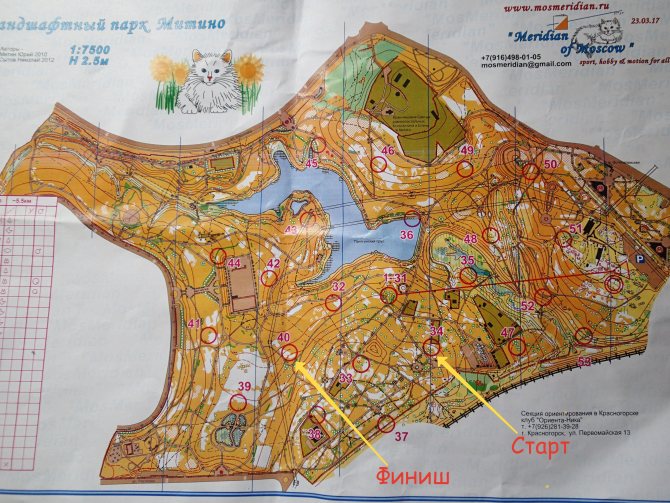
To begin with, let's take
Sports tablet compass
Its needle rotates quickly and settles down, and its base is transparent. We place it on the map so as to connect START and FINISH with one of its longitudinal lines.

You don’t have to look for this line, but simply connect our points with the edge of a compass block
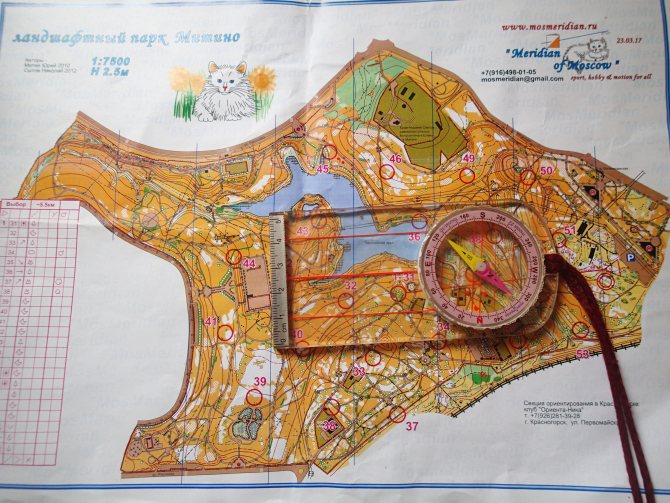
Important point! The FINISH point should be at the END of the compass. If we connect the dots in reverse, then we will go in the opposite direction.
Now we need to make sure that the north needle of the compass points exactly north on the map. The north is at the top of all our maps (with the exception of maps of exits from the Moscow metro...).
A rotating round thing will help us with this - a compass card - and blue lines drawn from top to bottom on this map (magnetic meridians).
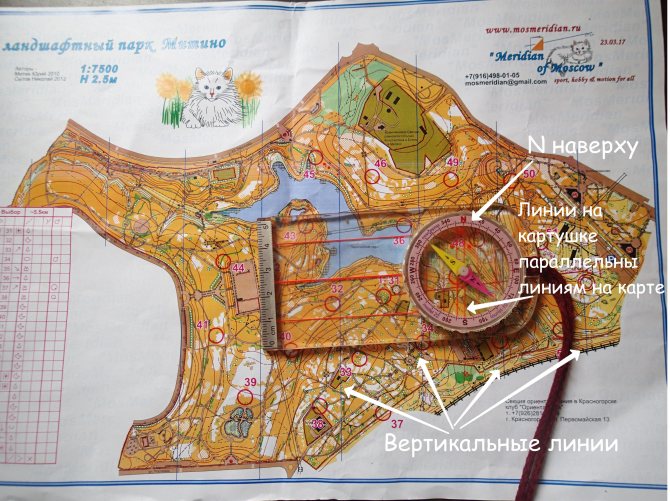
Now you can even remove the card. We begin to spin in place with the compass/rotate the map together with the compass so that the compass arrow points north on the map (to the letter N).

All!
Of course, you don’t have to turn the card and put the compass needle oriented to the top border of the map by eye, but the edges of the map, parallel to which the arrow should be, are at the border of the field of view, and it’s easy to accumulate deviation. And we also have magnetic declination, local magnetic anomalies, inaccuracy of maps, crooked hands, vision, etc., so where errors can be avoided, it is better to avoid them.
Sports finger compass
Apply to our Start and Finish accordingly.

Compass assembled under the right hand
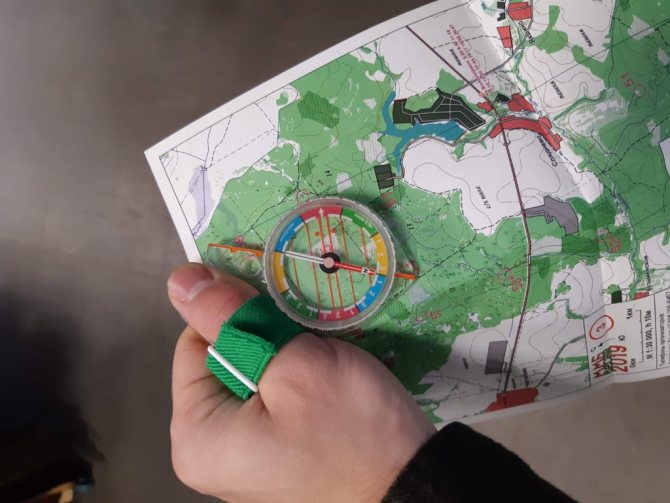
Compass assembled for the left hand
Further actions are similar to those with a tablet compass.
Military compass
It is military because in addition to dividing the circle into degrees, familiar from school, this compass also has marks dividing the circle into 6400 divisions. Using this division, snipers and artillerymen can quickly determine the distance to the target, knowing its dimensions. You can read more about this, for example, here, or by googling “measurement of angles in thousandths”.
We are interested in its civilian use and its sights (a magnifying glass and a cover with a slot and a string).
First, everything is exactly the same as with a sports compass: we place it, connecting the START and FINISH points, with the front (cover) in the direction of the finish.

It is useless to rotate the card here, therefore, relying only on our eye, we immediately begin to rotate so that the north arrow points to the north of the map.
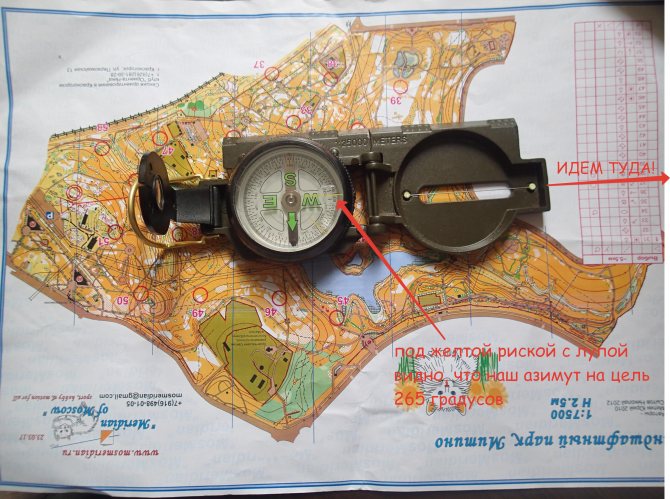
In principle, it is already clear where to go: the lid of the compass shows us the direction. But we don’t have an ordinary compass, but with bells and whistles! Just in case, we remember the azimuth to our object (265 degrees), because now we will move the compass a lot and get everything wrong. Raise the lid with the string by 90°, and the bracket with the magnifying glass by approximately 45°, so that the yellow line and azimuth scales can be seen through the magnifying glass, and terrain objects can be seen through the slot with the string.
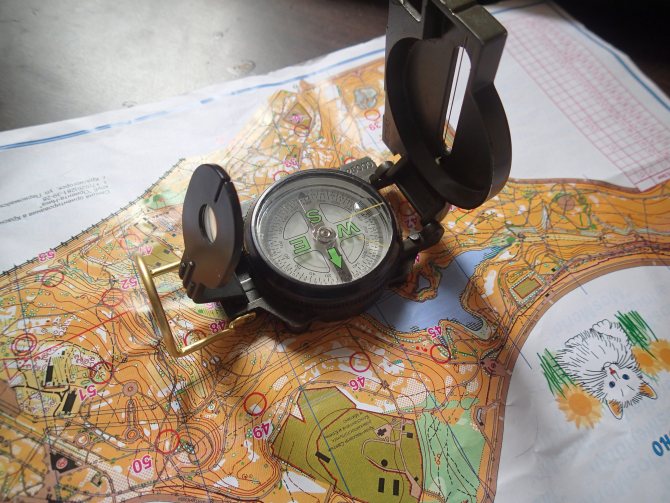
And we bring the compass to our face
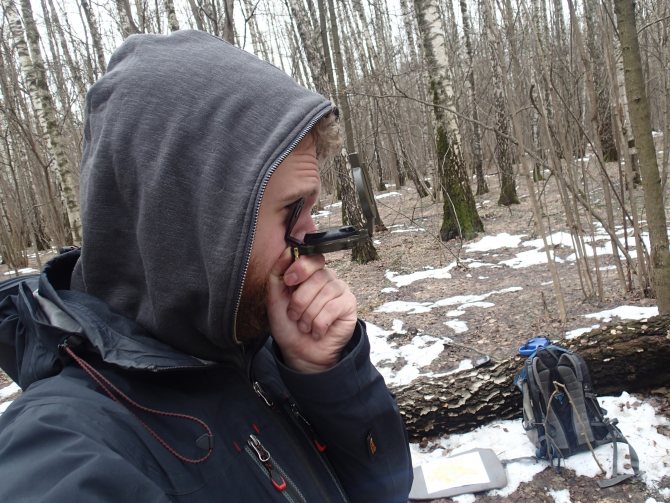
First mindful selfie
We see something like this:
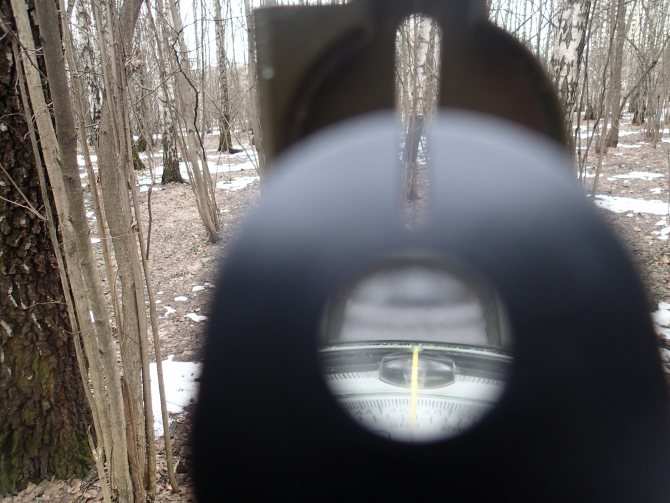
That is, we see at the same time: a yellow mark, under which a disk indicating degrees rotates (we need to turn so that it is 265), two slots (on the bracket with a magnifying glass and on the compass lid), a string stretched in the middle of the slot in the lid (in the photo not visible due to focusing), and a noticeable birch tree, which is in line with all of the above.
Then you can remove the compass and calmly walk towards the object marked in the slot. At the object, repeat the procedure of applying the compass to the face (here we must not forget about our 265 degrees) and so on until we arrive where we need to.
This particular compass that I have is very slow, I don’t recommend it for orienteering or in general if speed is important to you.
Regular compass without bells and whistles
Any keychain built into a knife/flint, or any other place where the Chinese inserted it, is also applicable. There are no rotating cards, sights or anything else. But it is light, lies casually at the bottom of the backpack/hangs around the neck and is taken out when necessary when the GPS has died.
Usually I don’t even orient the map to the north; this is done in my head. In our example, the map shows that we need to go almost to the west (to the left of the arrow pointing north).
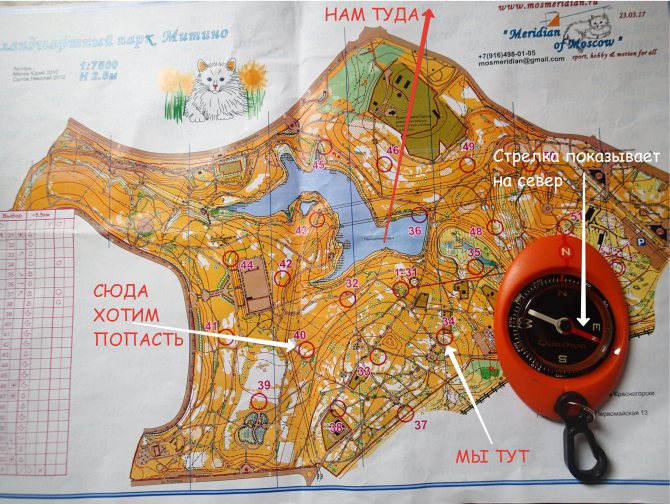
Some may find it convenient to have a compass like this, hanging on your wrist like a wristwatch.
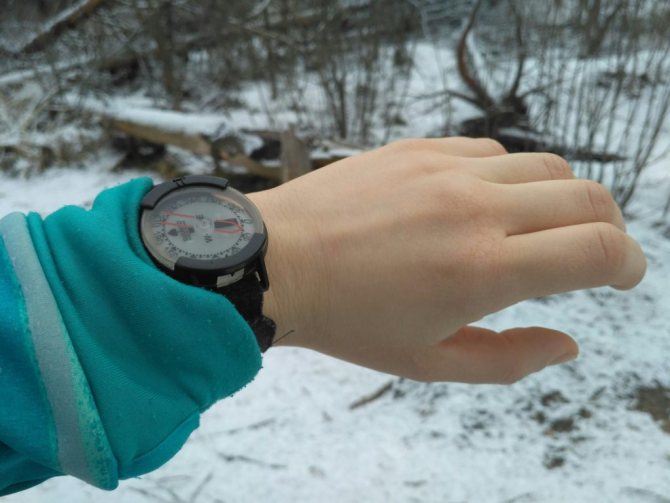
Compass in electronic devices
For example, in some GPS receivers, such as my Garmin Etrex 30.
This is what the screen looks like with it (you need to use the compass in a horizontal position of the device)
The smart device immediately writes to me that its front part is directed along the magnetic azimuth of 309 degrees.
And if I turn on navigation to a certain point, an arrow will appear showing the direction to my goal
I need to turn a little to the left so that my target is directly in front of me.
Almost any modern smartphone is equipped with a compass - you just need to install the application. One of the simplest GPS Status & Toolbox. Here's an example of the compass screen in the Locus Map app.

Due to the fact that electromagnetic radiation has a special influence on the compass in electronics, for the correct operation of compasses in such devices, they must be calibrated, and the more often the better. In Garmin products, you need to select “Calibrate compass” in the compass menu and follow the instructions on the screen (The program will show you how to rotate the device in different planes). To calibrate the compass on Android, you must either select the appropriate item in the application menu, or, if it is missing, launch the compass, and then make the following movements with your phone.
Keeping in mind the reliability of ordinary compasses, do not store them near iron objects, strong magnets (found in speakers, for example) and away from other compasses.
To master the navigation procedure with a compass in practice, I advise you to take part in orienteering competitions. For example, in Mosmeridian.
That’s probably all for those who wanted to find out what types of compasses there are and learn how to work with them.
PS: for armchair survivalists and theorists making presentations in sports tourism clubs: there will be no theoretical nonsense about constructing directional angles on the General Staff map. Except for the test in military topography, this has never been useful to me once in my life. Did you find it useful? We describe the real case in the comments.
PPS: While I was writing this article, the idea came to write a post about ways to find the cardinal directions without a compass and dispel a couple of persistent myths. Here she is.
You can join my hikes through the group on VKontakte: https://vk.com/shuriktravel. There is a schedule of planned events, but it’s easier to join the group, and then you will receive invitations to go on trips (do you have permission for invitations to events in your settings?)
